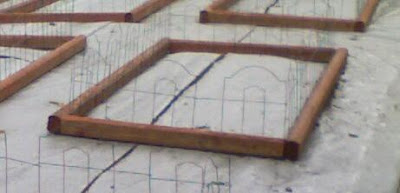 I was biking around Boulder the other day, and ran into a lady who had taken ownership the space between the curb and the sidewalk. This space is called a planting strip. Rather than just leave the weeds and scraggly grass that had been there before, she had it rototilled put down some weed barrier and was placing some nice looking garden plots down. She planned to raise some vegetables and some flowers in the planting strip. Her main motivation was fun with her kids; secondary was making the space look better; it would have been hard to make it look worse.
I was biking around Boulder the other day, and ran into a lady who had taken ownership the space between the curb and the sidewalk. This space is called a planting strip. Rather than just leave the weeds and scraggly grass that had been there before, she had it rototilled put down some weed barrier and was placing some nice looking garden plots down. She planned to raise some vegetables and some flowers in the planting strip. Her main motivation was fun with her kids; secondary was making the space look better; it would have been hard to make it look worse. I saw another property owner who rototilled their entire lawn, including the planting strip. I chatted with them briefly regarding their plans for the space. They were replacing most of the lawn with new grass, but did plan to plant some vegetable gardens in concretee garden circles that were set back from the street a good bit; see photo.
I saw another property owner who rototilled their entire lawn, including the planting strip. I chatted with them briefly regarding their plans for the space. They were replacing most of the lawn with new grass, but did plan to plant some vegetable gardens in concretee garden circles that were set back from the street a good bit; see photo.Both of these landowners were helping make their neighborhoods more beautiful. They were learning or refining gardening skills. And they were producing food in an area that was not productive before. I don't know if this fits the textbook definition of permaculture, but they were definitely taking steps to make their lives and lawns more sustainable.
However, these landowners had some concerns about these actions as well. The reason that the photos I've placed don't have more in view is to hide the locations. There was concern about being hassled by the city of Boulder. Apparently, some people have done this kind of planting strip gardening in the past and been forced to remove their gardens. One of the landowners claimed that as long as what you had in the strip was less than 36 inches high, you would be OK. I did some searching and found this link that doesn't really speak to this issue. However, the page it links to states the planting strip "shall be maintained and may be improved as such by the abutting property owner." You should ask your city's maintenance department for their rules and regulations. In any case, this property owner wanted to stay on the down low.
Other concerns included exhaust from cars and buses and pedestrian interference. I talked to a Ag Extension specialist about this a few years ago when I was looking at gardening a strip of land close to the road, and I don't remember that person being especially concerned. Pedestrian interference, aka people stepping on the garden, was dealt with by providing plenty of space for people walking on the sidewalk and/or getting out of their cars. Additionally, you can see the small fence in the first picture above; it's not meant to keep people out, but rather to warn people who might not be paying attention.
If you are looking for some additional garden space, the planting strip may be a good option. The pluses for using the planting strip (as opposed to other locations):
- it tends to get good sunlight due to the nearby road
- it might be in zone 1 or 2, depending on where it is in relation to your driveway
- it is land that is probably not very well used right now
- there might be issues with your governing locality
- the public nature of the garden requires more upkeep and visual concern than might be true otherwise
- you might not be able to erect more permanent structures (trellises, compost piles)
- foot traffic might cause damage to the garden.
No comments:
Post a Comment